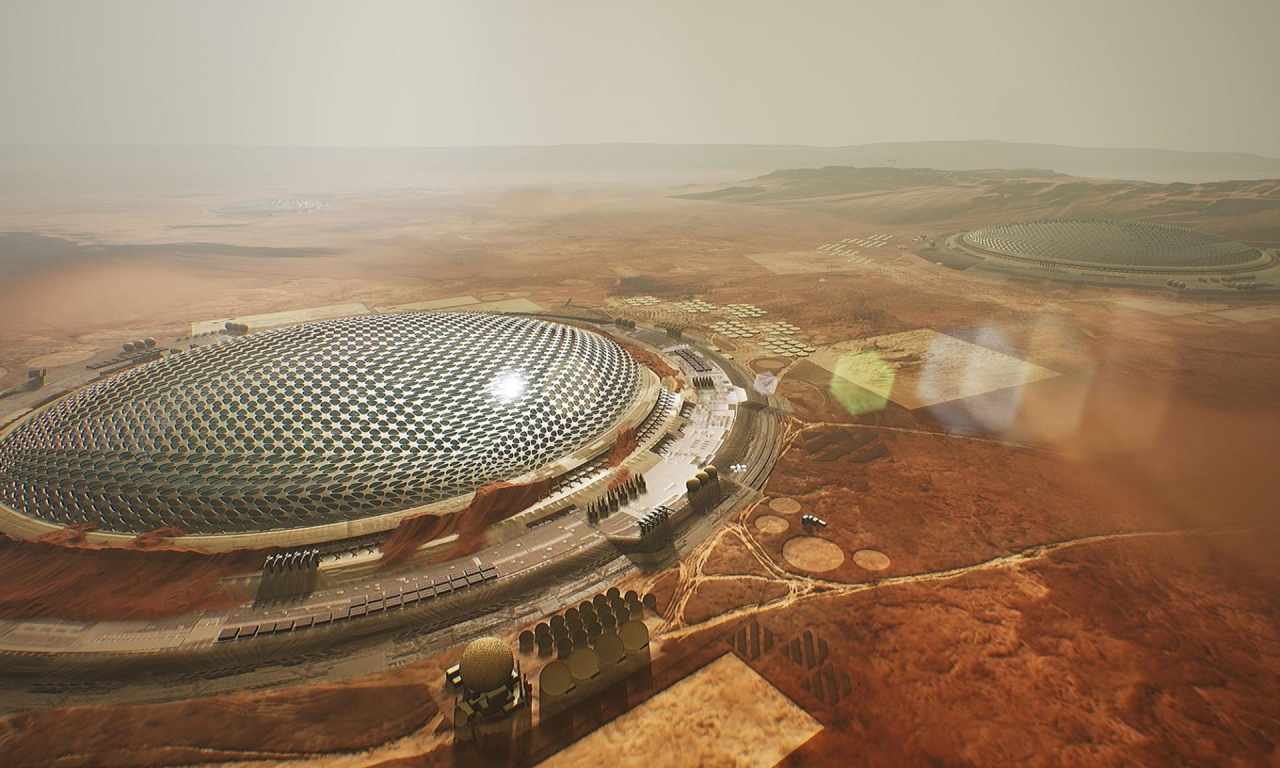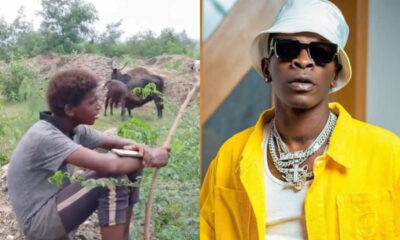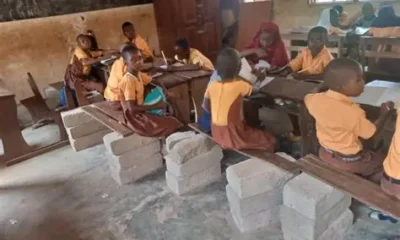Published
4 years agoon
By
Adubianews
The new design overall contains five cities – the capital is called Nüwa. The vertical city has homes, offices and green spaces, all built into the side of a cliff to protect inhabitants from atmospheric pressure and radiation.
The oxygen is largely produced by plants, food is 90 per cent plant-based and the energy comes from solar panels.
Mars is half the size of Earth. But how would we get there? Every two years there are a couple of weeks when the planet is the closest to Earth, so the trip would only take six months to get there.
However, the circumstances on the Red Planet are far from friendly. The atmospheric pressure is not suitable for humans and the radiation is lethal on the surface without any shelter.
“We had to do a lot of analysis based on computing and working with the scientists to try to understand what are the circumstances that we will face,” says founder of architecture studio ABIBOO, Alfredo Muñoz, adding “we have to face challenges that are very specific to the conditions of Mars, one of them is gravity, which is only one-third of the gravity on Earth.”
On the other hand, CO2 and water can be obtained on the surface.
“Water is one of the great advantages that Mars offers, it helps to be able to get the proper materials for the construction. Basically, with the water and the Co2, we can generate carbon and with the carbon, we can generate steel,” says Muñoz. The architecture company plans to use exclusively Martian materials for the construction.
The Mars city project is part of scientific work organised by The Mars Society and developed by the SONet network, an international team of scientists and academics. Architecture studio ABIBOO has created the designs based on the latest scientific research.
“The learnings that we are getting by developing a fully sustainable city on Mars brings us so much know-how and ideas and insights, about things that we could do differently on earth,” says Muñoz.
According to the architecture company’s analysis, the construction can start by 2054 and it could be built by 2100 – that is – when the first community could start living there, Muñoz explains.
“We think it is doable from the technical aspects. [What takes time] is more about ensuring that there is enough will and associations in the international community. This has to be something that comes from a private sector, public sector, different locations, different cultures, in order to ensure that there is diversity.”
Watch video through this link;
https://www.euronews.com/living/2021/03/19/plans-for-the-first-sustainable-city-on-mars-unveiled?jwsource=cl


Bullgod Calls Jesus a “Fool”, Cites Proverbs 29:11 to Justify Shocking Statement


Fulani Herdsman Wins Hearts Singing Shatta Wale’s ‘One Day’ While Herding Cattle


NPP Supporter Demands Resignation of Chairman and General Secretary After Election Loss


Alleged Witchcraft Incident at Assin Anwiasu School Sparks Panic Among Students and Teachers


Trotro Mate Challenges Elderly Passenger to End His Life During Heated Dispute


Drunkards Association Cancels Demo After Cathedral Conversion Decision


Tertiary Student Chooses First-Class Degree Over $1 Million, Sparks Debate


You’re The Cause Of The B1/B2 Visa Cut’ – David Osei Slams Okudzeto;Ghana-US Visa Saga


Omotola Jalade-Ekeinde is enduring marriage to Captain Matthew Ekeinde

























